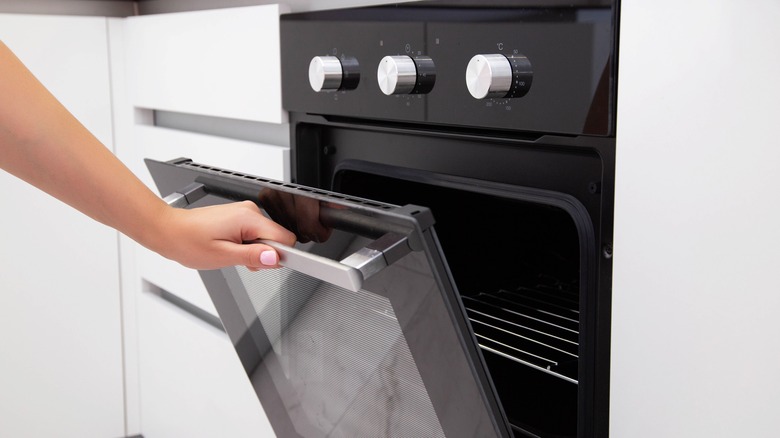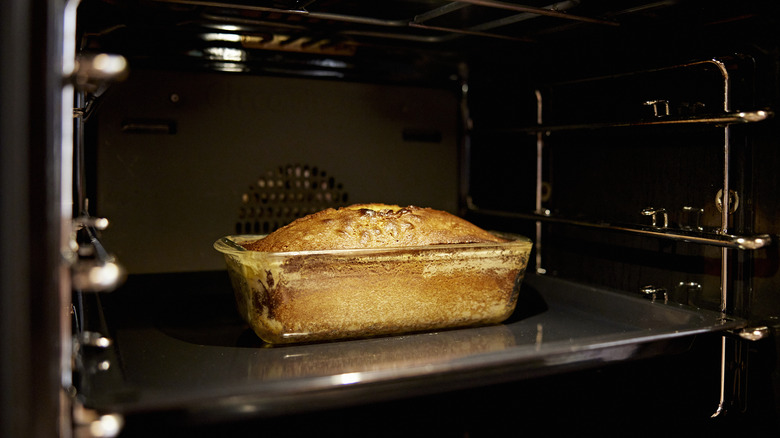Why You Should Think Twice Before Putting Batter In A Convection Oven
All ovens have the same obvious end goal: To cook and bake food. However, how they arrive at that objective can vary considerably depending on the oven. The most common of these appliances found in the American kitchen is the conventional electric or gas oven, which features multiple racks for desired levels of heat exposure. More than likely, this type of oven is what most of us are familiar with as it's standard — meaning that this is what most recipes consider when instructing temperature and bake times.
Around 2001, the U.S. caught on to the European style of cooking and baking with a convection oven, which, unlike the conventional oven, uses a fan to circulate heat for more even and faster cooking. So while the convection oven vs. conventional debate boils down to personal preference, there are things we should consider when it comes to convection ovens; namely, you can cook just about anything in a convection oven, but when it comes to breads and raw batters, i.e., cakes, custards, yeast dough, etc., it's best to stick with a conventional oven. When batter or bread is placed in the convection oven, the outside will cook faster while the inside stays raw — resulting in burnt cakes and underdeveloped breads. What's more, the fans inside the oven can blow the batter around, which is something we don't want.
How to bake batter in a convection oven
Even though experts agree that batter isn't an ideal choice for baking in a convection oven, some still contend that it can be done — it's just a little bit more finicky. One rule of thumb is to follow the 25/25 guideline, which means reducing the cook time a recipe calls for by 25 percent, as well as lowering the required temperature by 25 degrees Fahrenheit. This way, the baked goods aren't exposed to as much heat for quite as long.
You'll also want to avoid opening the oven door too frequently to check on your batter, as this can disrupt air circulation and ruin the end result. Still, try to stay on top of keeping an eye on it since it will be cooking faster than normal. Do a toothpick test on the batter no earlier than ten minutes before it's supposed to come out of the oven to ensure it has not yet baked completely; moreover, you should omit placing foil over the top of a pan, even if the recipe calls for it. Finally, be mindful of not overcrowding the oven — each pan should be spaced out at least two inches apart.

